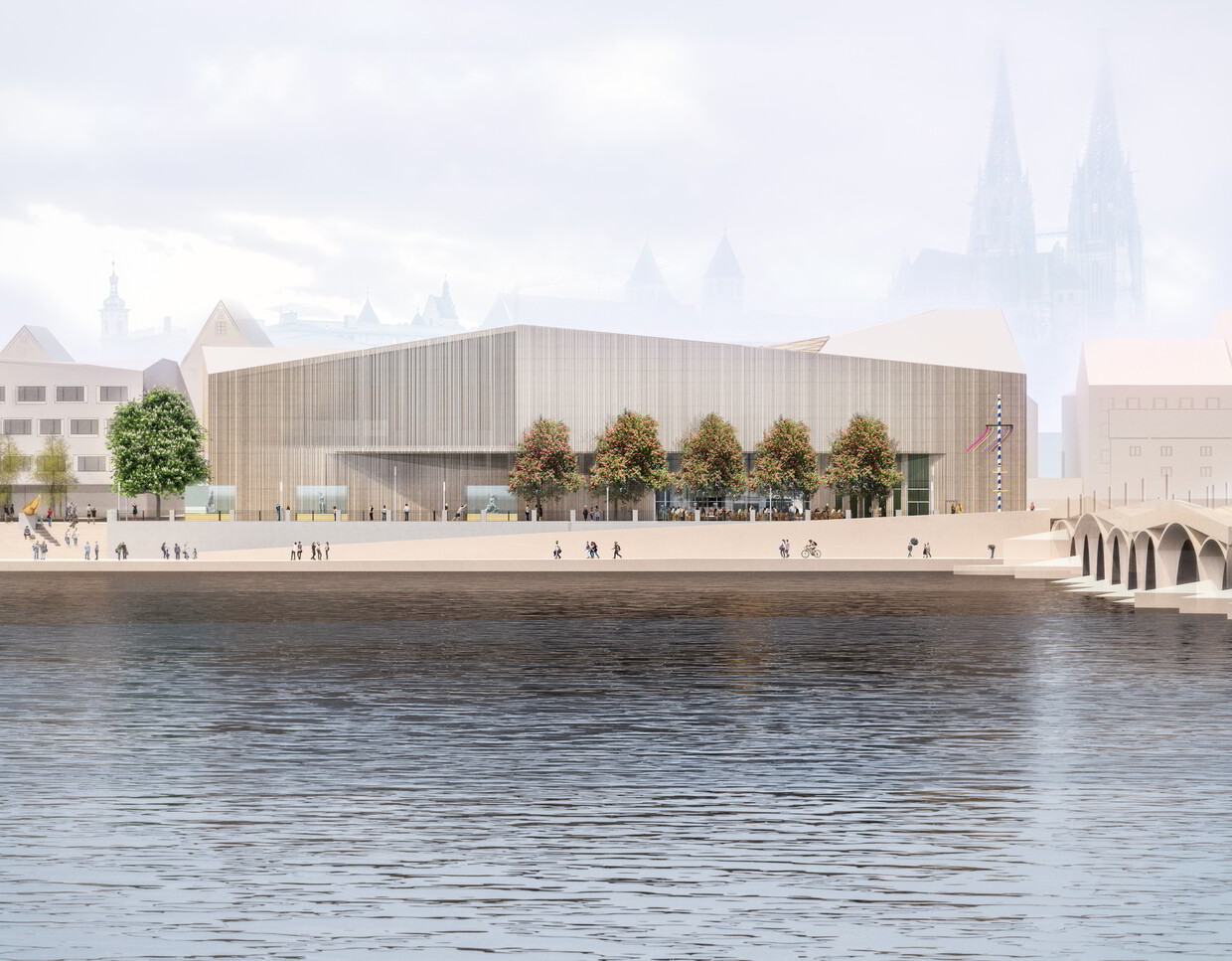Augsburg / Regensburg. In 2018, Bavaria will be celebrating the one hundredth anniversary of the Free State and the two hundredth anniversary of the Constitution of the Kingdom – fascinating history with many high points and severe setbacks. The Haus der Bayerischen Geschichte will be opening its museum in Regensburg in two stages as part of these two anniversaries: The new museum building on Donaumarkt will be presented to the public for the first time at a big celebration on June 9 and 10, 2018. The permanent exhibition will finally open in May of 2019.
How Bavaria Became a Free State and What Makes It So Distinctive
This is the subject of the museum’s permanent exhibition, which traces Bavaria s transformation into a modern state. It is housed in a state-of-the-art museum that is also a new gateway onto the World Heritage Site of the city Regensburg. A 360-degree panorama presents “Bavarian” history from 100 to 1800 from Regensburg and explores the city’s older monuments in an ironic Bavarian narrative.
White and Blue History from 1800 down to the Present
The permanent exhibition continues where the panorama leaves off and presents a theater of history with thirty stages and eight cultural showcases. They recount formative episodes of Bavarian history: the royal crown into which Napoleon married, so to speak, the mysterious death of Ludwig II, what bicyclists have to do with this, how Bavaria made a traditional and modern appearance in Chicago for the first time ever, how Hitler became big in Munich, how displaced persons in Franconia made pop music possible, and how guest workers changed Bavaria, the Olympics presented a big show, and a balloon from the GDR landed in Naila and caused a stir in Hollywood.
Typically Bavarian
Much has been and is associated with Bavarians – from dialects, major fairs, building frenzy, and sacred theater to magnificent nature. We will be presenting and delving into clichés. How imperiled is the idyll? How Catholic are Bavarians really? What does typical Bavarian architecture look like? The spotlight in all of these histories is on people. Numerous individuals donated some 1,500 personal mementos to the museum. We are using them to recount Bavarians’ “major” as well as many “minor” histories.
Bavariathek: Online Portal and Virtual Workbench
The Bavariathek is readying the museum for a multimedia future. Historical holdings, especially the Haus der Bayerischen Geschichte’s large image archive, are being digitized, catalogued in a media archive, and made accessible to the public through an individual online portal. School students in particular but also anyone else interested in history will be able to access it for research and documentation purposes. We are developing state-of-the-art applications based on history together with the University of Regensburg and the East Bavarian University of Applied Sciences Amberg-Weiden.
The Bavariathek is not just a virtual entity. It is physically located in Regensburg: Media rooms with equipmentare being built next to the museum on the Donaumarkt. They will serve as an educational center where school classes will be able to broaden their knowledge of history, while developing their media literacy. Attention will focus on critically using the Internet, documenting and interpreting historical sources, and creating individual media products. School students will be able to use the results of projects to produce virtual exhibitions or put out their own apps, films, podcasts or publications, for instance.

